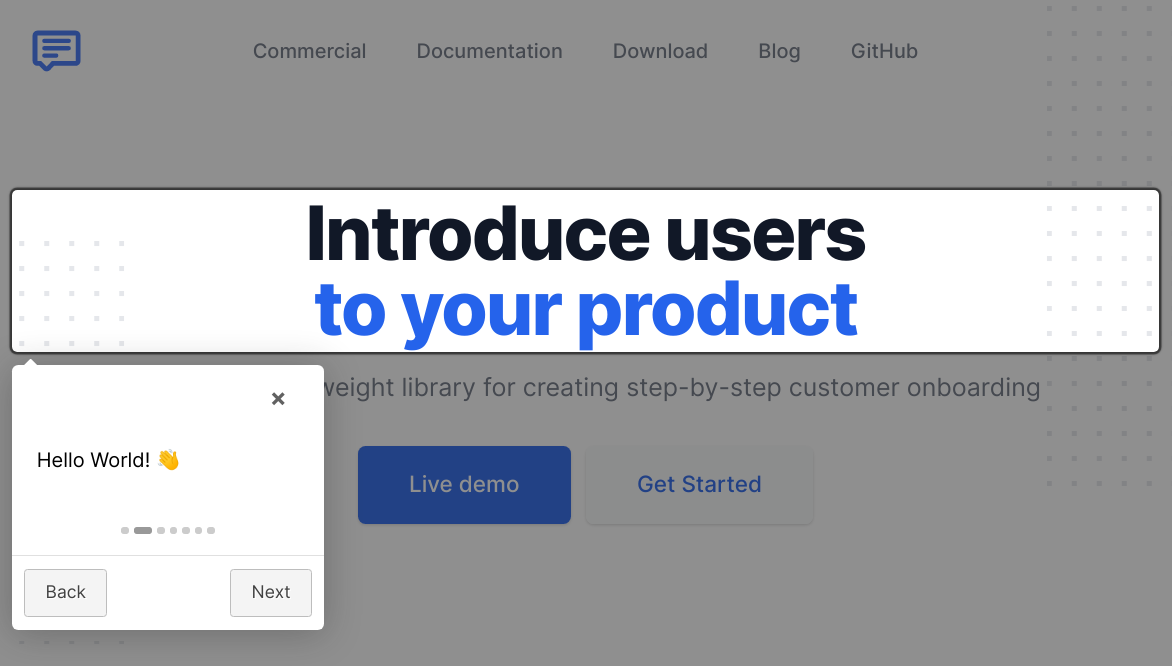- ability to change text in buttons at runtime with setOptions
- smooth scrolling
- ability to change media-based positioning behavior
- bug fix: change _getWinSize function for correct position, more correct position on 320px mobile
Better introductions for websites and features with a step-by-step guide for your projects.
You can obtain your local copy of Intro.js from:
1) This github repository, using git clone https://github.com/usablica/intro.js.git
2) Using bower bower install intro.js --save
3) Using npm npm install intro.js --save
4) Download it from CDN (1, 2)
Intro.js can be added to your site in three simple steps:
1) Include intro.js and introjs.css (or the minified version for production) in your page. Use introjs-rtl.min.css for Right-to-Left language support.
CDN hosted files are available at jsDelivr (click Show More) & cdnjs.
2) Add data-intro and data-step to your HTML elements. To add hints you should use data-hint attribute.
For example:
<a href='http://google.com/' data-intro='Hello step one!'></a>See all attributes here.
3) Call this JavaScript function:
introJs().start();Optionally, pass one parameter to introJs function to limit the presentation section.
For example introJs(".introduction-farm").start(); runs the introduction only for elements with class='introduction-farm'.
Please visit Documentation.
Intro.js has many wrappers for different purposes. Please visit Documentation for more info.
First you should install nodejs and npm, then first run this command: npm install to install all dependencies.
Now you can run this command to minify all static resources:
make build
Want to learn faster and easier? Here we have Instant IntroJs, Packt Publishing.
Afshin Mehrabani
Benjamin J DeLong
If you want to use Intro.js for a commercial application, theme or plugin the commercial license is the appropriate license. With this option, your source code is kept proprietary. Purchase a commercial license at introjs.com
GNU AGPLv3

